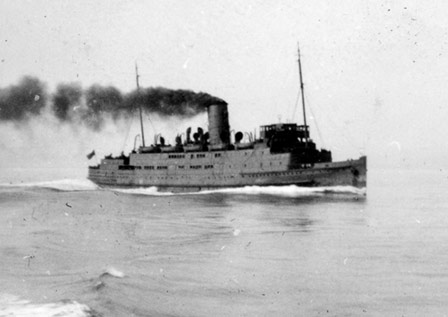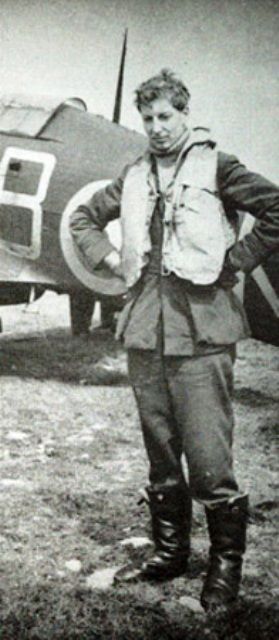Wednesday 22 May 1940
British Prime Minister Winston Churchill flies to Paris (Vincennes) to hash out a strategy with the Anglo-French Supreme War Council. General Weygand advances the idea of cutting off the German spearhead at the Channel by launching concentric attacks from north and south. Everyone agrees that it is a good idea, but the mass of French forces remain behind the Maginot Line in the south. Deposed Commander-in-chief General Gamelin not only had proposed this plan but tried to implement it - and now more precious days have passed.
In the morning, the OKW orders Guderian's XIX Corps to head north, toward the isolated BEF and associated French forces. Reorienting the Axis of a major offensive is extremely difficult, and the Wehrmacht has to do it on the fly at the end of a long, tenuous supply network for its advanced troops.
The initial objectives are Boulogne (2nd Panzer Division) and Calais (1st Panzer Division), but this soon changes. The 10th Panzer Division is retained to guard the southern flank. Boulogne, Calais and Dunkirk collectively are referred to as the "Channel Ports."
British troops at Calais are under the protection of RAF fighters based in England, and the air battle begins at first light. Both sides take losses, but the RAF is able to attack the advancing panzers. The 1st Panzer (Generallautnant Friedrich Kirchner) and other formations get across the Authie River at 08:00. They meet only scattered resistance at Desvres, Samer, and near Boulogne. Guderian quickly tinkers with the plan and sends the 10th Panzer Division (Generalleutnant Ferdinand Schaal) toward Samer/Calais, and the 1st toward Dunkirk. The 10th Panzer has to stop to garrison Amiens until infantry units arrive.
The British at Boulogne have been reinforced by the 20th Guards Brigade and have had time to dig in. The 2nd Panzer Division (Generalleutnant Rudolf Veiel) is advancing in two columns makes steady progress toward Boulogne after brushing aside French 48th Infantry Regiment troops at Nesles. A panzer attack on the Boulogne perimeter at 17:00 is repulsed, and another at 19:00. Fighting continues into the night, with the Germans isolating some Irish Guards at 22:00. As the day concludes, 2d Panzer is attacking Welsh Guards positions along the coast.
General Rommel still stands before Arras, waiting for the infantry to aid his assault on the key town. He also is recuperating from the large British tank attack of the 21st, which gave him quite a fright.
The German 18th Army attacks the retreating Belgians near Eeklo. German 6th Army presses forward near Courtrai against the British 4th Infantry Division and 44th Infantry Division.
With the German spearheading turning north, the main front on the Somme/Oise/Aisne starts to solidify. The Belgian army retreats to the Lys River.
 |
| View of Rotterdam in May 1940 (Instytut Pamieci Narodowej). |
RAF Bomber Command sends 59 planes to attack the advancing Wehrmacht spearhead.
Battle of the Atlantic: U-37 (Kapitänleutnant Victor Oehrn) sends four torpedoes at 9,494-ton British freighter Dunster Grange south of Ireland. When they all miss, it surfaces to use the deck gun. The Dunster Grange is armed, and when the U-boat surfaces, the British ship returns fire. The U-boat departs, and the Dunster Grange continues toward Liverpool.
Convoy OA 153 GF departs from Southend, Convoy OB 153 departs from Liverpool.
Norway: The British retreat from Mo i Rana north toward the British base at Bodø continues apace, and local commander Colonel Gubbins has difficulty trying to stop it. His plan is to man a defensive line at Storjord, 20 miles (32 km) south of the ferry stop at Rognan. His Scots Guards troops, though, under Lieutenant Colonel Thomas Byrnand Trappes-Lomax, are in motion toward the north and showing no signs of stopping. In fact, Trappes-Lomax is putting his men on requisitioned buses to make the trip faster and easier. The German 2d Mountain Division is hot on their heels. The bottom line is that the intended line at Storjord becomes a nullity and some other solution must be found.
The Luftwaffe continues its gradual reinforcement of General Dietl at Narvik, dropping off an additional 63 men there from seaplanes.
The Luftwaffe sinks Royal Navy anti-submarine trawler Melbourne near Narvik.
More RAF units depart from the Continent for England as their bases come closer to the front lines.
British Government: Parliament passes the Emergency Powers (Defence) Act 1940. While not quite martial law, it gives the government extensive new powers of citizens and property (banks, munitions production, wages, profits, work conditions).
Military Intelligence: Bletchley Park crack some Luftwaffe Enigma settings. Luftwaffe signals officers are notoriously lax about following even the simplest security protocols, whereas, say, Kriegsmarine signallers are much more rigorous.
War Crimes: The Soviet men who liquidated the Polish officers at Katyn Forest - 21,000 without a single escape! - are being given medals and cash awards. The Soviets are also busy deporting relatives to Siberia based on the "last letters" the deceased men were allowed to write,
Belgium: King Leopold has told General Weygand that the area still controlled by Allied troops only has enough food left for two weeks.
Romania: The government mobilizes the reserves.
Albania: Italian Foreign Minister Count Ciano arrives in Durres aboard the Italian Cruiser Garibaldi for an inspection tour.
Finland: In an early sign of Finlandization, the pro-Moscow Finland - Soviet Peace and Friendship Society forms.
Gibraltar: Non-essential personnel are being transported to French Morocco.
Australia: The government authorizes the formation of the 8th Infantry Division.
China: The Japanese aerial attacks on Chungking continue.
May 1940
May 1, 1940: British Leave ÅndalsnesMay 2, 1940: British Depart Namsos
May 3, 1940: Many Norwegians Surrendering
May 4, 1940: Bader Returns
May 5, 1940: HMS Seal Survives
May 6, 1940: Allies Focus on Narvik
May 7, 1940: In The Name of God, Go!
May 8, 1940: Exit Chamberlain
May 9, 1940: Enter Churchill
May 10, 1940: Fall Gelb
May 11, 1940: Eben Emael Surrenders
May 12, 1940: Germans at Sedan
May 13, 1940: Rommel at Work
May 14, 1940: German Breakout in France
May 15, 1940: Holland Surrenders
May 16, 1940: Dash to the Channel
May 17, 1940: Germans Take Brussels
May 18, 1940: Germans Take Antwerp
May 19, 1940: Failed French Counterattack
May 20, 1940: Panzers on the Coast
May 21, 1940: Battle of Arras
May 22, 1940: Attacking Channel Ports
May 23, 1940: British Evacuate Boulogne
May 24, 1940: Hitler's Stop Order
May 25, 1940: Belgian Defenses Creaking
May 26, 1940: Operation Dynamo
May 27, 1940: King Leopold Surrenders
May 28, 1940: The Allies Take Narvik
May 29, 1940: Lille Falls
May 30, 1940: Operation Fish
May 31, 1940: Peak Day for Dynamo
2020


No comments:
Post a Comment